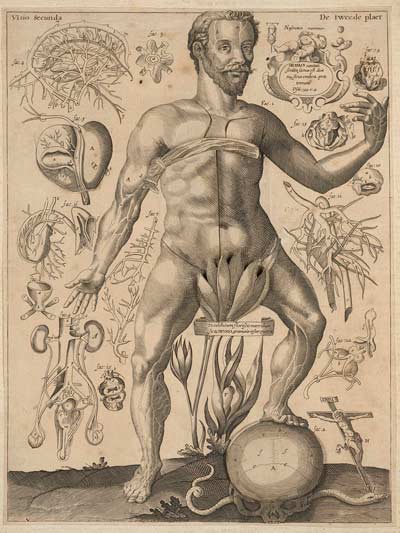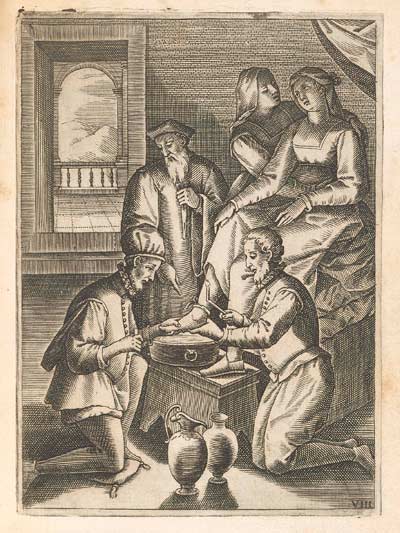By the middle of the fifteenth century, the belief that artists would greatly benefit from the study of anatomy had been expressed in the influential writings of two artists greatly influenced by Graeco-Roman art: Lorenzo Ghiberti (1378–1455) and Leon Battista Alberti (1404–1472). In Book 3 of his memoirs, Commentarii, Ghiberti argues that the sculptor should know about optics, anatomy, and human proportion. And in his treatise On Painting, Alberti strongly encourages painters and sculptors to search for the idealized human proportion by examining the body closely: As evidenced in this exhibit, it is obvious that these new aesthetic theories materialized in many of the illustrations of medical books printed from the fifteenth century onward. In the Middle Ages the human body had been depicted as a concept, as a schematic idea designed to facilitate memorization. This approach is exemplified, for instance, in the medieval anatomical drawings called the five-figure series. Conversely, the illustrated book of the Renaissance exemplifies the full force of naturalism in art.




